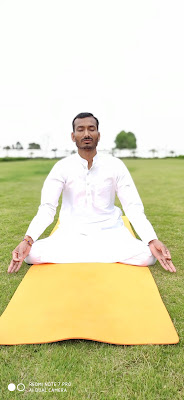Markatasana (monkey pose)

Markatasana (monkey pose) Mercatasan is the most effective posture for the commander. Mercut is called monkey in Hindi. Just like the monkey's waist is flexible. And there is never back pain. In the same way, those who practice this asana will never have any command. Mercatasan provides instant relief to the patient. How to do mercutasan? Method of Mercatasan: - First of all lie down on the pedestal and both feet should be folded up and the two hands should be spread in the same direction as the elephant on both sides. And take the mode of the left side of the neck, now while inhaling, bend the knees of both feet towards the right side and make sure that the heel is on the heel and the knee is on the knee, stop breathing by counting ...








